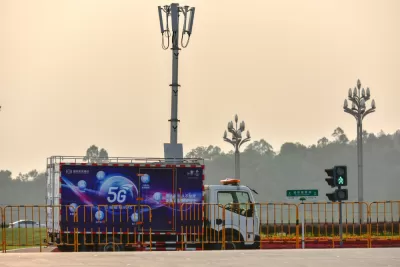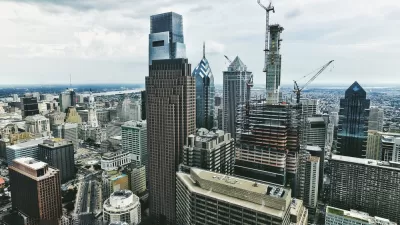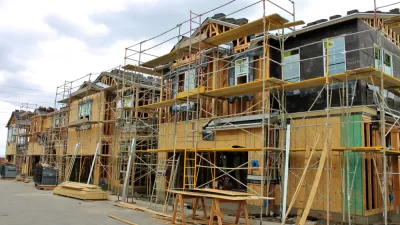A congressional committee advanced a bill recently that would streamline telecommunications infrastructure investments by preempting local control of siting decisions.

The House Energy and Commerce Committee recently marked up H.R. 3557, the American Broadband Deployment Act of 2023, which will preempt local control of wireless telecommunications facility siting.
An article by Angelina Panettieri, written for the National League of Cities, raises awareness about the consequences of the bill for local authority and criticizes the process that produced the bill’s form so far.
“When the committee held an initial hearing on broadband permitting streamlining, including a draft of the American Broadband Deployment Act, no state or local government was invited to testify. NLC and other local stakeholders highlighted the lack of local input, as well as the harms of communications infrastructure preemption for local governments,” writes Panettieri.
According to Panettieri, H.R. 3557 follows a recent pattern of federal and state laws that have undercut the authority of local governments, “from housing and ridesharing to minimum wage and telecommunications.” The impetus for H.R. 3557, according to Panettieri, comes from a desire to streamline planning processes to enable projects funded by the Infrastructure Investment and Jobs Act. According to Panettieri, permit process streamlining “has developed renewed interest as a policy focus for lawmakers from both parties and an opportunity for further preemption.”
Panettieri, who is the Legislative Director for Information Technology and Communications for the National League of Cities, urges local officials to call their congressional representative to oppose the bill.
FULL STORY: House Committee Advances Communications Infrastructure Preemption Bill

Trump Administration Could Effectively End Housing Voucher Program
Federal officials are eyeing major cuts to the Section 8 program that helps millions of low-income households pay rent.

Planetizen Federal Action Tracker
A weekly monitor of how Trump’s orders and actions are impacting planners and planning in America.

Ken Jennings Launches Transit Web Series
The Jeopardy champ wants you to ride public transit.

California Invests Additional $5M in Electric School Buses
The state wants to electrify all of its school bus fleets by 2035.

Austin Launches $2M Homelessness Prevention Fund
A new grant program from the city’s Homeless Strategy Office will fund rental assistance and supportive services.

Alabama School Forestry Initiative Brings Trees to Schoolyards
Trees can improve physical and mental health for students and commnity members.
Urban Design for Planners 1: Software Tools
This six-course series explores essential urban design concepts using open source software and equips planners with the tools they need to participate fully in the urban design process.
Planning for Universal Design
Learn the tools for implementing Universal Design in planning regulations.
Ada County Highway District
Clanton & Associates, Inc.
Jessamine County Fiscal Court
Institute for Housing and Urban Development Studies (IHS)
City of Grandview
Harvard GSD Executive Education
Toledo-Lucas County Plan Commissions
Salt Lake City
NYU Wagner Graduate School of Public Service





























